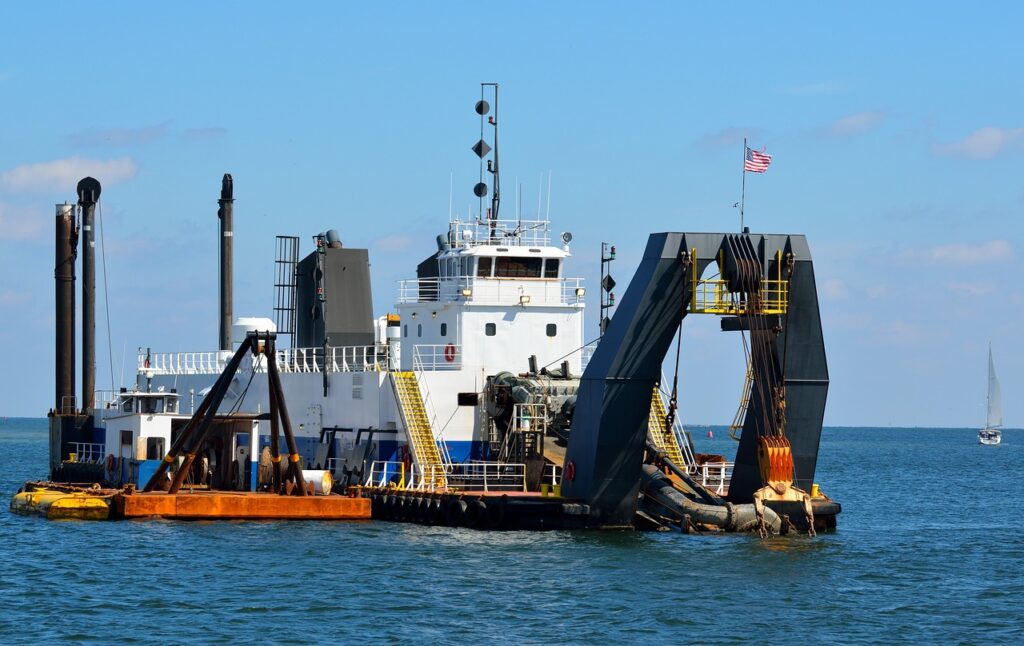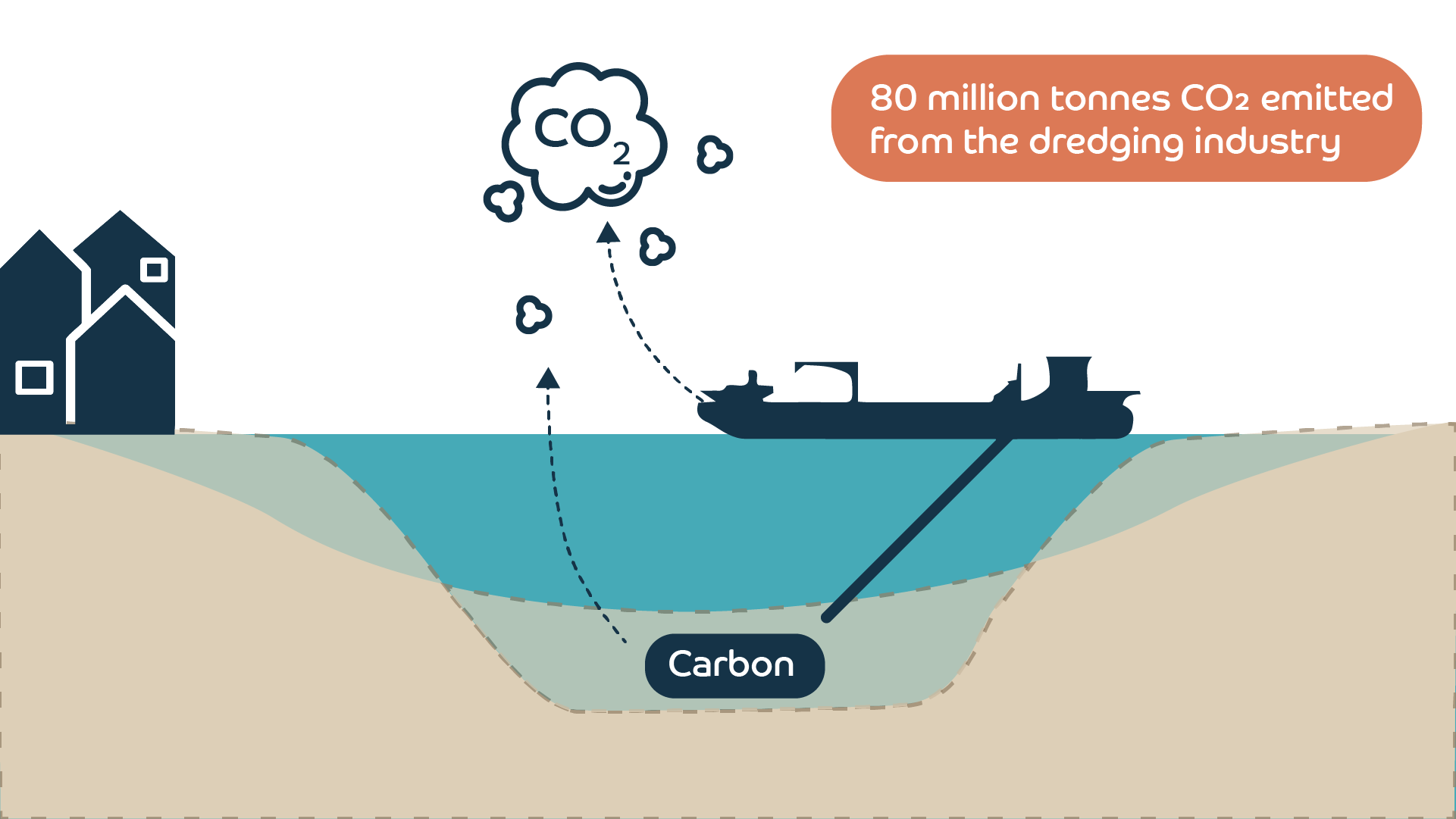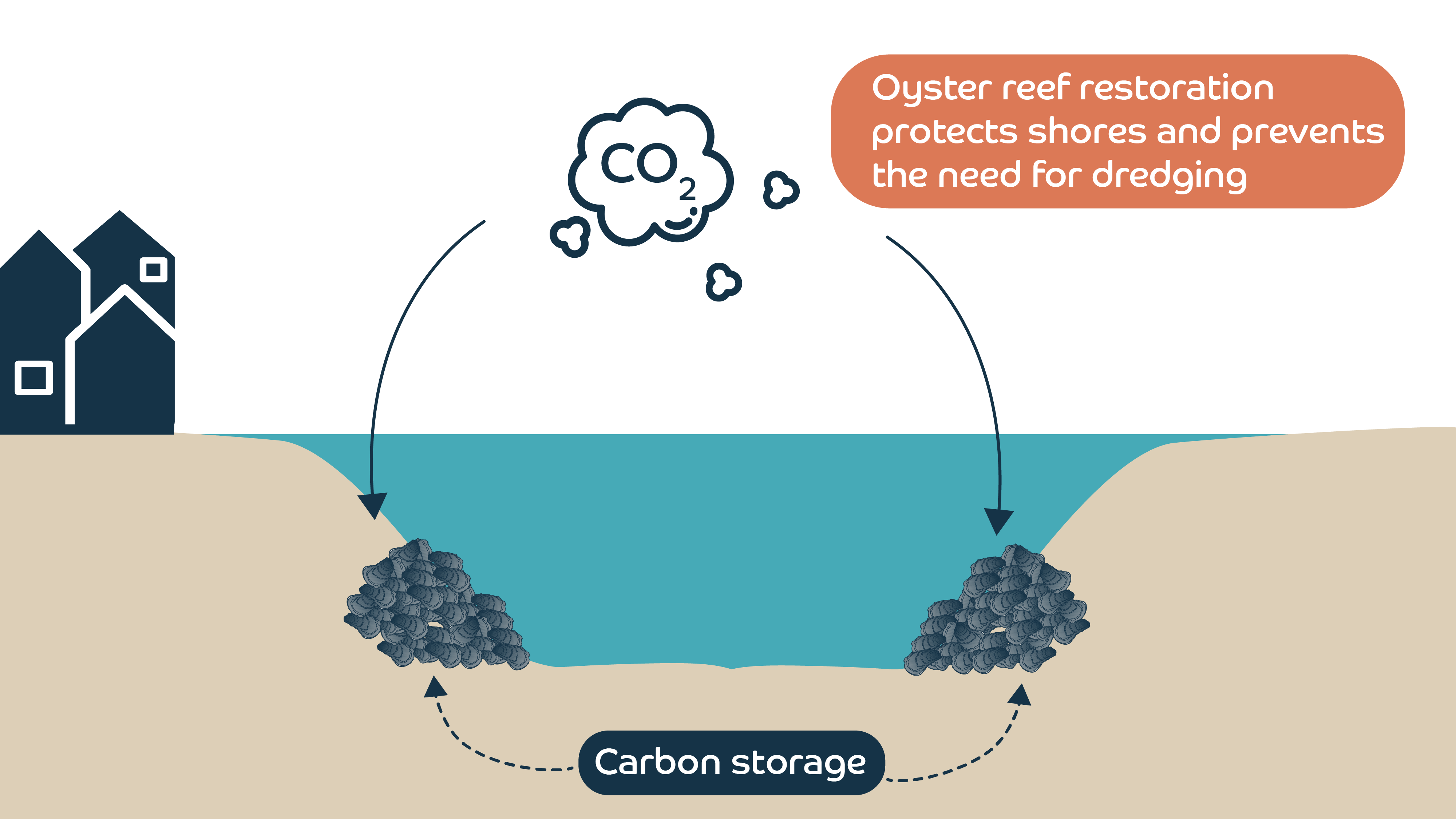Marine dredging, the process of removing sediment from the ocean floor, is a common practice that causes significant carbon dioxide (CO2) emissions, contributing to the global climate crisis.
In some cases, marine dredging may be necessary, for example, for maintaining and deepening navigation channels and harbours, or to protect shorelines from erosion caused by waves, currents, and storms.
In this article, we’ll explore the role of oyster restoration in potentially reducing the need for seabed dredging and consequently avoiding its resulting CO2 emissions, while fostering a healthier marine ecosystem.
According to a 2021 study published in the journal Nature, marine dredging releases approximately 1 billion tonnes of carbon dioxide (CO2) into the atmosphere each year. This is equivalent to the total annual emissions of all aviation worldwide. The study’s findings highlight the significant impact of dredging on climate change, as it releases carbon that has been stored in the ocean floor for centuries.
Aditionally, the machinery used in dredging releases substantial CO2 emissions, adding to the greenhouse gas burden. These emissions not only contribute to rising global temperatures but also disrupt marine ecosystems, endangering the diverse array of species that live and depend on the ocean.

Protecting specific areas where bottom trawling is prevalent could significantly reduce these emissions. The study found that protecting just 3.6% of the ocean could eliminate 90% of the carbon emission risk from dredging.
How can we reduce the need for seabed dredging?
Oyster reef restoration presents an innovative and sustainable alternative to marine dredging. Oysters are renowned for their ability to build robust structures that provide essential habitats for marine life. Beyond their ecological benefits, oyster reefs act as a natural barrier, reducing the need for invasive dredging practices.
Oyster reefs also act as carbon sinks, sequestering CO2 and mitigating the impacts of ocean acidification. Unlike dredging, which releases stored carbon into the atmosphere, oyster reef restoration provides a dual benefit by enhancing marine biodiversity that absorbs CO2.
The positive impact of oyster reefs on the environment is amplified as they continue to grow and thrive, making them an invaluable ally in the fight against climate change.
By promoting the restoration of oyster reef habitats, we can contribute to mitigating the harmful effects of dredging on the environment.


Oyster reef restoration is urgent and necessary not only because just 15% of the population of this keystone species remains and the vital role they play in the marine ecosystem. But also because oyster reefs offer a wide array of environmental services, making them a sustainable and nature-based solution for many of the current environmental challenges we are facing, including seabed dredging.
It is time to embrace the potential of oyster reef restoration and work towards a future where sustainable practices should be considered alongside these activities to reduce the environmentally damaging alternatives.